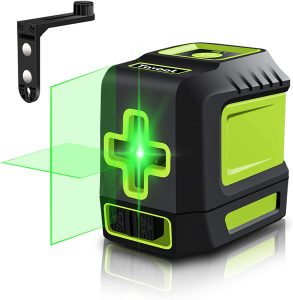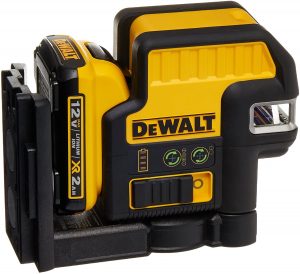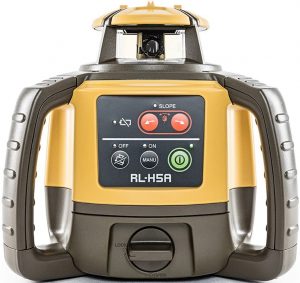Table of Contents
INTRODUCTION
Laser levels are creative tools that release a laser beam to show a vertical or horizontal illuminated line on a surface. They are usually used for home remodeling and in the construction industry when a straight and accurate level reference is needed. Laser levels can be used outdoors or indoors. They can even be used for tasks as basic as hanging cabinets or pictures on a wall to more tasking projects like checking the level of a foundation or leveling the ground for a new building.
Laser levels will discharge a red or green beam. A green beam requires more battery power and is noticeably brighter and easier to see when outdoors. A red beam doesn’t use up as much power and is mostly used in dimly lit places and indoors.
Many laser levels come already calibrated, but some don’t. Calibrating your laser level is essential. Normally, a laser level can remain calibrated for as long as a year, depending on the type of working conditions it has been put through. For example, a laser level that has fallen a couple of times may have taken some hard knocks that may lead to the laser level needing a calibration.
TYPES OF LASER LEVELS
There are three most common types of laser levels, which would be explained further below;
LINE LASERS
Line lasers emit a single vertical or horizontal illuminated line onto any surface. These laser lines are mostly used for simple leveling to arrange items on one wall, for example, installing cabinets.

SPOT LASERS
Spot lasers emit a small circle of light on a work surface or wall. They can project a single dot or even multiple dots of reference on a surface. They are usually used as a plummet and can also be used to run electrical wiring and plumbing.

ROTARY LASERS
These lasers project a laser in a 360-degree circle to make a level plane through the area. These lasers are used when a reference plane needs to be made across multiple walls like flooring a deck or installing outlets. Rotary lasers are mounted on a steady tripod, and the height is adjusted to achieve the needed plane.

LASER LEVEL CALIBRATION
Laser level calibration is an essential step to ensure that the alignment and accuracy remain within the manufacturer’s specifications. Most accurate laser levels will have a level of accuracy of about 1/16 inch at 100 feet, depending on the working conditions that it has been subjected to.
Most laser levels have a locking system that stabilizes their inner mechanisms when being moved. It is important to transport the laser levels properly. Ensure that the locking system is in place during transportation or when being stored at a construction site to reduce damage.
HOW TO CALIBRATE A LASER LEVEL
The process of calibration for laser levels are the same for each of the different level types. A regularly used method to check the calibration is to compare the laser level against another calibrated laser level.
Now, to check the level against itself, the level should be put in the center of a large room on a sturdy tripod or surface. The laser should be put in a spacious room that’ll allow you to space them at least 20-50 feet from one of the walls.
Next, turn on the laser and mark the height on the paper where the laser beam bisects the wall. Rotate the 180 degrees level body so that the opposite side faces the wall, then mark the height on the paper on the wall. If the laser possesses a Y-axis, rotate the body of the laser to 90 degrees and mark the height on the paper. Repeat this process but to 180-degrees and mark the height on the paper.
If the laser’s alignment is not in the specifications, you will need to make an adjustment to ensure that the laser is aligned. Many units require a manual adjustment using calibration screws situated under a cover on the level’s body. Some models come with an option of calibrating itself using a mode to self-calibrate that will make a calibration routine at the simple touch of a button. You can also re-adjust the height of the laser beam in the self-calibration mode.
A basic calibration and alignment can be established on-site with the right tools. Still, it is advisable to systematically send the unit to a professional like a qualified calibration laboratory for a full calibration check. Also, see how to use a laser level with a tripod
CONCLUSION
Laser level calibration is essential and must be done periodically. The type of calibration which you will be using is based largely on the type of laser level. It is advisable to calibrate your laser level from the onset of the purchase. In conclusion, it is very important to calibrate your laser levels. It will assist in prolonging the quality and service life of your laser level and save you a ton of wasted energy and time.
